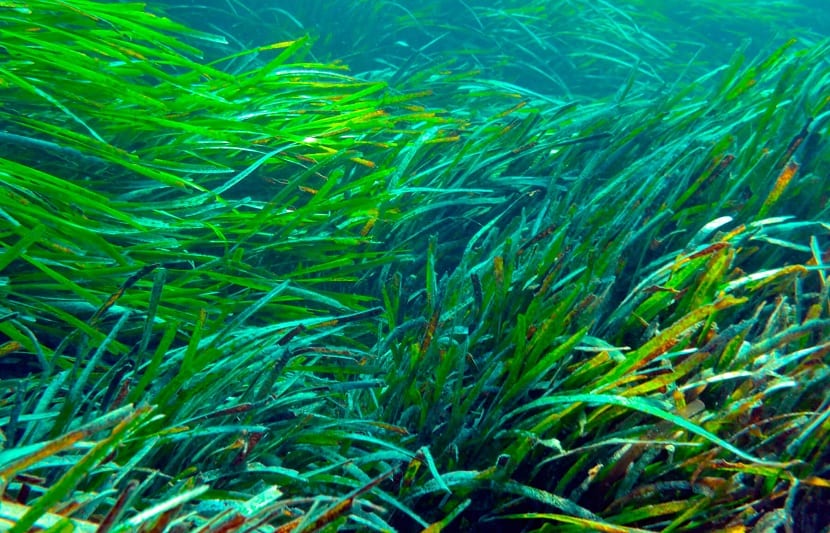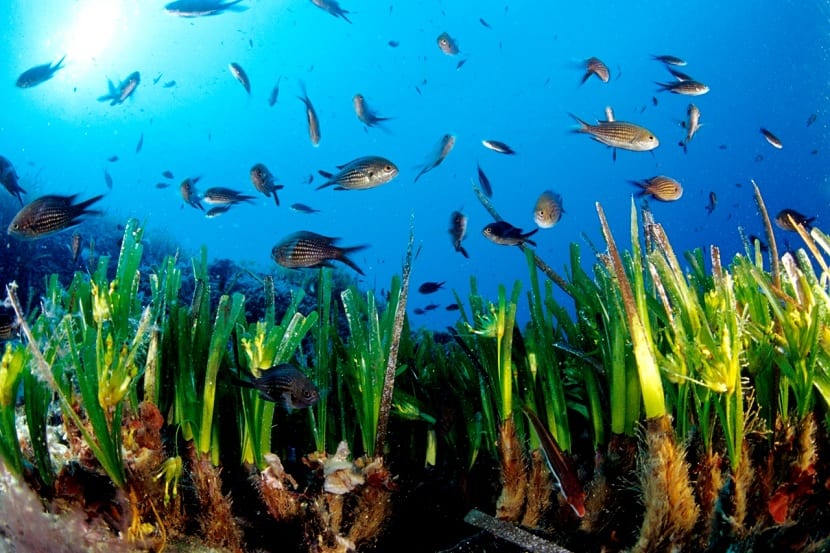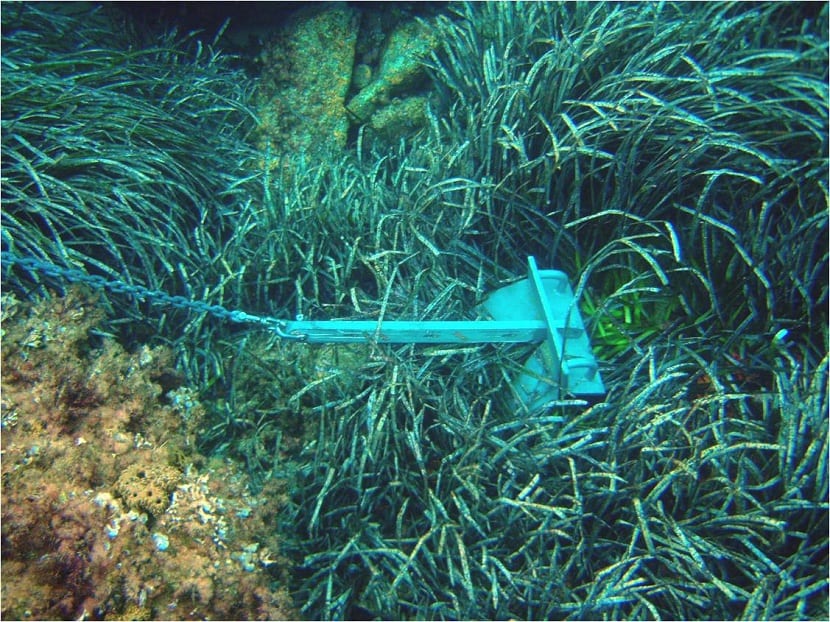
Oceanic posidonia It is well known for its role on the coasts and for its threatened status. There are many people who know or have heard of the posidonia oceanica, but do not know why exactly it is so important and what function they have.
One of the first things to know about posidonia oceanica is to distinguish it from seaweed. Posidonia is not an algae, it is an underwater plant. It has fruits, flowers, leaves, stem and roots like a normal plant. Do you want to know then why it is so important to preserve it?
Oceanic posidonia

The posidonia oceanica is an underwater plant that blooms in autumn and produces fruits known as "sea olives". It is a photophilic plant, that is, it needs sunlight even when it is under water to carry out photosynthesis. In addition, posidonia is distributed in the seas forming seagrass meadows.
One of the functions that posidonia has is to be a good indicator of clean waters, since it only lives in waters that are pure. They do not resist very well contaminated places, not oxygenated, with a lot of turbidity or with excess organic matter. It is an endemic plant of the Mediterranean, declared a World Heritage Site by UNESCO in recognition of its multiple benefits for the environment.
Importance of the oceanic posidonia

One of the main functions that seagrass meadows provide They are to provide biomass and oxygen to generate suitable habitats for the survival of many species. Therefore, if the posidonia contributes to the survival of many species, the coasts in which these phanerogams are found increase their diversity. An ecosystem with an abundant diversity of species is much less vulnerable to the impacts that can be produced on it.
Another of the main functions of the posidonia is that of reducing the erosion suffered by the beaches. They do this by reducing the amount of sediment that comes with the waves trapping them along the grasslands. In addition, they form barriers against the waves. The grasslands generate between 4 and 20 liters of oxygen per day for each square meter, constituting one of the most important sources of oxygenation in the Mediterranean. Part of this oxygen is diffused into the Earth's atmosphere during periods of maximum productivity.
If we start to quantify the number of species that survive thanks to posidonia meadows, we have about 400 plant species and about 1.000 animal species. All these living beings have their habitat in the posidonia meadows. Therefore, the conservation of these meadows is of vital importance if we want to conserve the rest of the added species. Grasslands are also a good breeding ground for animals such as sponges, starfish, mollusks, hundreds of fish, seahorses, etc.
Many of the species that reproduce in the posidonia meadows have great commercial interest, so their destruction would lead to serious problems in the local economy that lives from fishing. Diving tourism would lose considerable importance also with the destruction of the posidonia meadows. It is estimated that the economic benefits that grasslands produce they are at 14.000 euros per hectare per year.
What affects the posidonia oceanica?
The degradation of the prairies is being very fast due to the impacts that we generate the human being in them. Impacts such as the contamination of the bottoms, the excess of organic matter (which influences the correct growth of the plant) and the warming of the waters of the Mediterranean caused by climate change are some of the effects that destroy the posidonia meadows. After a hot summer, the mortality rate is so great that the losses cannot be offset by growth, which is extremely slow.
One of the human actions that most destroy posidonia meadows is illegal trawling. Grasslands are also destroyed by dredging, dumping, debris produced by aquaculture, coastal construction, invasive algae, etc.
As you can see, this plant is too useful not to protect it.
